What Animals Live in the Ocean?
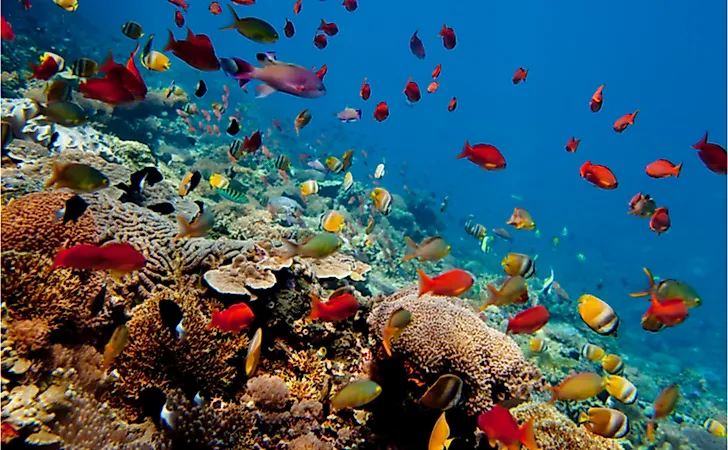
The Earth’s oceans contain about 97% of the planet’s water, much of which is saline water. There are five major oceans on Earth, namely Pacific, Indian, Atlantic, Arctic, and the Southern Ocean. Because the oceans are a major component of the planet’s hydrosphere, they are an important part of life and also influences the world’s weather patterns and climate. The oceans are home to about 230,000 known species. However, because only 5% of the oceans have been explored, the total number of species existing in these oceans could be over two million. These species have special adaptations and live at different depths of the ocean with the majority found on the ocean floor. Here are some of the animals that are found in the ocean.
7. Shellfish
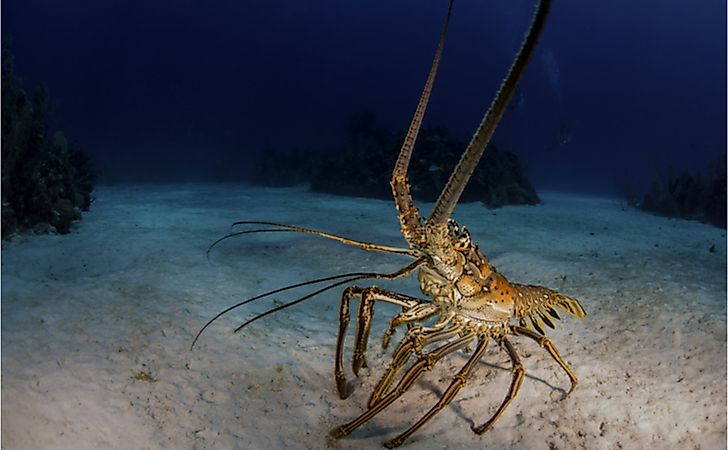
Shellfish is a term used to refer to aquatic invertebrates such as crustaceans, mollusks, and echinoderms. Crustaceans include animals such as lobsters, crabs, crayfish, prawns, shrimps, barnacles, woodlice, and krill. These species are aquatic and can also be found in freshwater bodies. Marine crustaceans are ubiquitous, meaning that they can be found anywhere within the ocean. Mollusca is the 2nd largest phylum of invertebrates after Arthropoda, consisting of over 85,000 known species. It is the largest group of marine organisms (23% of marine organisms). Examples of mollusks found in oceans are gastropods, cephalopods, scaphopoda, and aplacophora.Echinoderms consist of about 7,000 known species including sea urchins, starfish, sea cucumber, sand dollar, and sea lilies. These species are found at every ocean depth. Unlike Mollusca and Crustacea, the phylum has no terrestrial nor freshwater representative.
6. Fish
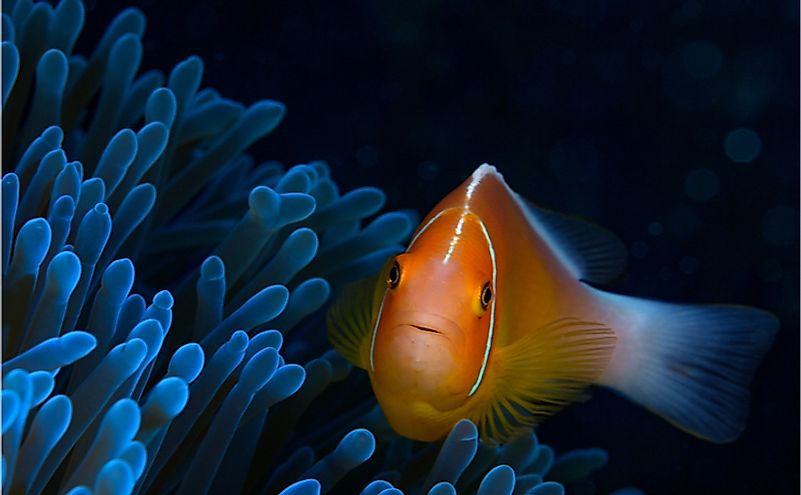
Fish are aquatic animals that possess gills but lack limbs with digits. They are closely related to the tunicates and together they form the olfactories. Fish are generally divided into five extant classes, namely Agnatha, Chondrichthyes, Placodermi, Ancothodii, and Osteichthyes. According to some estimates, the world ocean is home to about 20,000 species of fish. These saltwater fish come in various sizes, shapes, and colors, and inhabit different depts. Of the ocean. Some of the marine fish species include Atlantic cod, Atlantic Goliath grouper, Atlantic Bluefin tuna, blue marlin, blue tang, California grunion, Chinook salmon, angle fish, Pacific black dragon, sailfish, spotted porcupine fish, yellow tuna, and swordfish. These marine fish species are categorized into five groups; coastal fish, coral reef fish, deep-sea fish, demersal fish, and pelagic fish.
5. Mammals
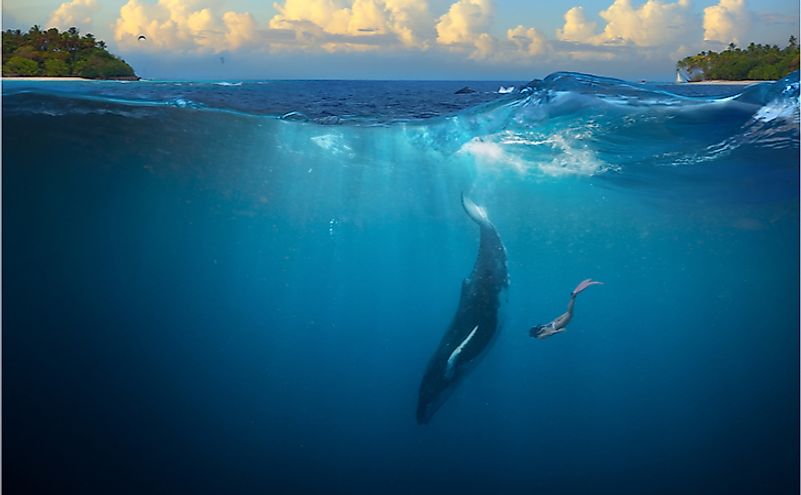
Although the majority of mammals are terrestrial animals, some species are aquatic and semi-aquatic. Marine mammals depend on the ocean and other marine ecosystems for their survival. Some of the known mammals that live in oceans include whales, seals, manatees, solar bears, and sea otters. The adaptation of these mammals to the aquatic lifestyle varies from one species to the other. While some species such as sirenians are fully aquatic, others like sea lion and seals are semi-aquatic, spending most of their time in water and only returning to land for activities such as mating, molting, and breeding. Others like sea otters and polar bears are less adapted to life in water and spend considerable time on land. Marine mammals were subject to commercial hunting, leading to a significant reduction in their numbers and extinction of species such as Japanese sea lion and sea mink. However, with the commercial fishing coming to an end, species such as northern elephant seal and gray seal have increased in numbers.
4. Turtles
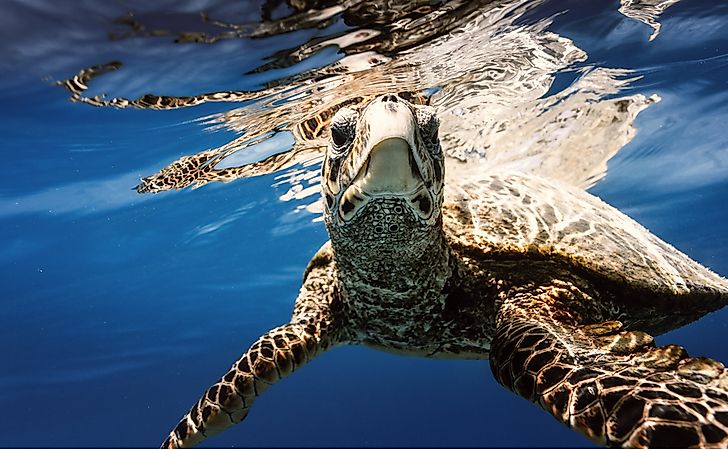
Turtles are cold-blooded Testudines and inhabit both freshwater and seawater habitats. Sea turtles are almost entirely aquatic and possess flippers instead of feet, which they use to generate thrust. Unlike the male sea turtles which never leave the sea, the female species must come on land to lay eggs. Their movement on land is very limited and often slow and laborious. The female lays eggs on dry, sandy beaches. There are seven species of sea turtles, namely flatback turtle, green turtle, hawksbill turtle, Kemp’s ridley turtle, leatherback turtle, and loggerhead turtle. All seven species face extinction due to habitat degradation and bycatch among other threats. Sea turtles feed on sponges and jellyfish while those with strong jaws can feed on shellfish.
3. Seabirds
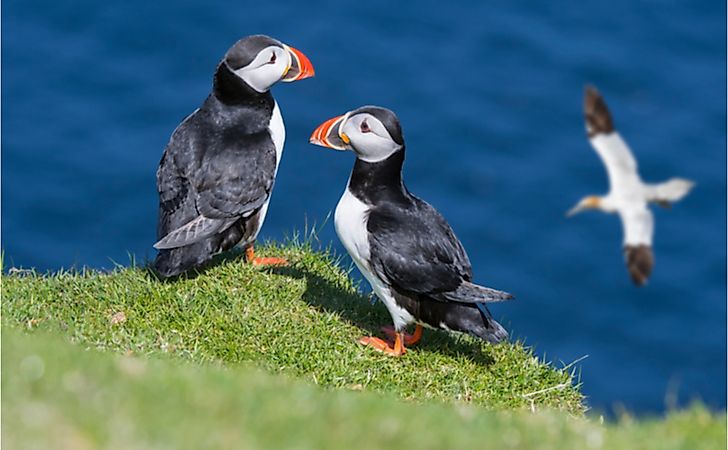
Seabirds are species of birds that depend on the ocean for food and other life’s requirements. Some of the species of seabirds are Adelie penguin, Arctic tern, Atlantic puffin, bald eagle, brown pelican, emperor penguin, European herring gull, and red-footed booby. These birds have adapted to living on and feeding in saltwater. Seabirds have salt glands which deal with the salt they eat and drink and also help in osmoregulation. The glands are positioned in the head and the excretion from them is almost pure sodium chloride. The physiology and behavior of seabirds have been shaped by their diet. These birds have four main feeding strategies; pursuit diving, surface feeding, predation, and plunge-diving.
2. Sharks
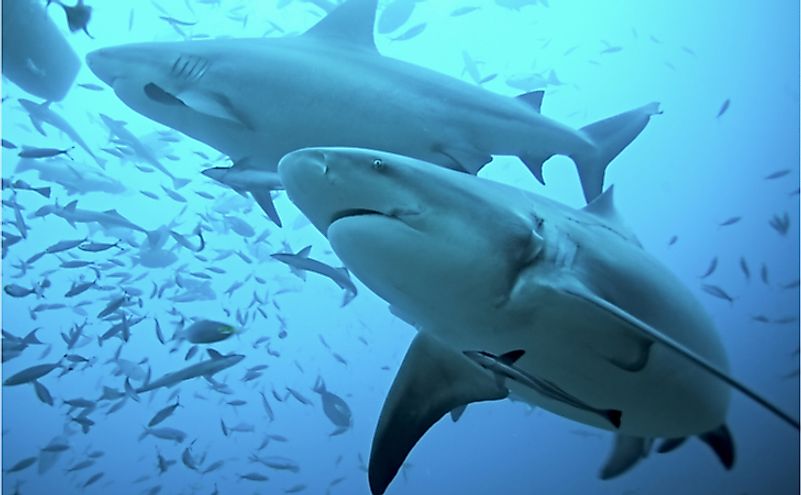
Although sharks are also a type of fish, they deserve special attention in this article. Sharks have inhabited the ocean waters for millions of years and played a critical role in maintaining a healthy ocean through predation. There are over 500species of sharks in the world ocean with varying characteristics including size and shape. The size ranges from 6.7 inches in length to 40 feet in length. Sharks are found in all the world oceans and commonly inhabit depth of 6,600 feet. Some of the well-known species include basking shark, blue shark, bull shark, tiger shark, hammerhead shark, white shark, and the Zebra shark. Their bodies are covered by dermal denticles that offer protection to the skin and improving fluid dynamics.
1. Invertebrates
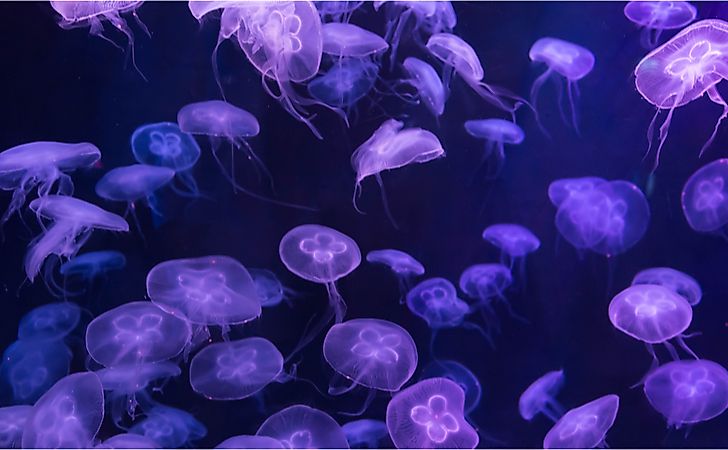
While shellfish are exoskeleton-bearing aquatic invertebrates consumed as food, the ocean also hosts a myriad of other invertebrates. The oceans are home to several invertebrates. Marine invertebrate is a term used to refer to all the invertebrates that live in the marine environment. Some of these species include sea slugs, jellyfish, and starfish. Marine invertebrates are categorized into 30 phyla and make up the most of microscopic life in the ocean. They mainly live in coral reefs, sea caves, and deep-sea floors. Most of these invertebrates feed on tiny zooplankton and phytoplankton while other species such as jellies and squids feed on fishes.











